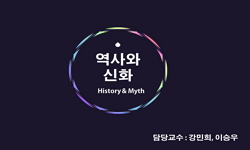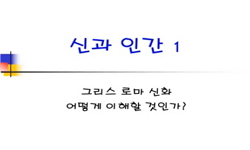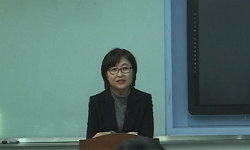Myth defines our lives with existing in our lives of today. In other words, pretty much of our sense of values and view of the world have originated from myth. China, Japan and Korea have been tied to the long historical and cultural bond. A lot of th...
http://chineseinput.net/에서 pinyin(병음)방식으로 중국어를 변환할 수 있습니다.
변환된 중국어를 복사하여 사용하시면 됩니다.
- 中文 을 입력하시려면 zhongwen을 입력하시고 space를누르시면됩니다.
- 北京 을 입력하시려면 beijing을 입력하시고 space를 누르시면 됩니다.
https://www.riss.kr/link?id=T11261273
- 저자
-
발행사항
서울 : 韓國外國語大學校 敎育大學院, 2008
-
학위논문사항
학위논문(석사) -- 韓國外國語大學校 敎育大學院 , 국어교육전공 , 2008. 2
-
발행연도
2008
-
작성언어
한국어
- 주제어
-
DDC
291.13
-
발행국(도시)
서울
-
형태사항
97 p. : 삽도 ; 26 cm.
-
일반주기명
지도교수: 양민정
참고문헌: p93-95. - 소장기관
-
0
상세조회 -
0
다운로드
부가정보
다국어 초록 (Multilingual Abstract)
First, the creation myth of China, Japan and Korea commonly derived from ‘Chaos’. In the myth chaos was thought of as 'Disorder' and 'Shortage', creation meant 'Order' and 'Rank' caused by the separation from heaven and earth. In addition, the factor of myth that the metamorphosis of the god of Giant is the origin of the universe, is shared by the three countries. It is an emblem of the idea that the universe is a living organism. The myth reconstructing the collapsed heaven, after the creation of the earth and heaven, is found in both Chinese and Korean myth. It is regarded not as the direct creation of the world, but as settling down the downfall of the order of the world due to the collapsed heaven. Relating to the origin of the world, it is certain that Chinese and Korea myth has the same factor as man was created with soil. Korean 'Changsega' and Japanese myth have a few things in common. For example, 'Miruk' and 'Seokga' were figured as creators in 'Kunggodo Myth' of Okinawa, and afterward, 'Miruk' and 'Seokga' competed with each other to take over the world.
The creation myth of China, Japan and Korea was examined connected with their culture. In case of China, it is seen that their unique idea, man ought to obey the order of the heaven and earth, was fundamentally attributable to the myth. Ancient Chinese set much importance on the order of the heaven and earth and they applied it to man. Japanese liberal sense of sex and peculiar wedding customs are seen to have its origin in the myth filled with sex and reproduction. Korean traditional view of humanity is also seen to find the source in our creation myth.
Second, the national foundation myth of China, Japan and Korea are compared and looked into here. The national founder of China, Hwangje established his definite position through combat, showed his superior power in making utensils and the image of respectable ruler with virtue. Japanese foundation myth was reconstituted minutely with political intent to explain reasonably the origin of rein over the country by Chunhwang. Through the descending feature of 'Susano' and ‘Ninigi’, gods from heaven, marriage and taking over sovereign power, it is certain to have a close link between Japanese and Korean myth. Korean foundation myth based on Dangun put the importance on man. The national founders of the three countries seemed to have the features as 'Culture Hero' and it gave the three peoples a basis for a sense of pride. In the aspect of taking over power, it was taken by fighting in Chinese and Japanese myth, on the other hand, by incorporation and harmony in Korean myth.
Third, cultural characteristics of the three peoples are referred here connected with the national foundation myths. Hwangje, the founder of China, is figured as a man of honor, the ideal human beings of a Confucianist. For chinese, this feature of Hwangje became the true image for ruler and human beings. Japanese foundation myth was reorganized nationally to secure authority and orthodoxy of Chunhwang family. This deifying of Chunhwang after became a motive on the sense of Chunhwang for Japanese. Japanese unique 'Situational Realism, to seek actual profit rather than to resist in the face of overwhelming power, also resulted from the myth. Korean human based way of thinking and preference for the number 3 have the origin in the foundation myth too.
Finally, this made clear the meaning of comparative study of Chinese, Japanese and Korean myth. It made a way for the beginning of study about the three countries' myth, looked deeper the myth with proper balance and set the importance on the comparison of Chinese and Korean myth that has been carried on carelessly. It tried to find the root of three countries' culture through the myth.
The problems of comparative literature were managed with the myth from the three countries. First of all, how to affect and be affected in the myth of the countries ought to be clear with objective material. By tracing the original myth, the fundamental features of the myth should be reconstructed. The study of South and North Korean myth is an important subject to deal with.
Myth defines our lives with existing in our lives of today. In other words, pretty much of our sense of values and view of the world have originated from myth. China, Japan and Korea have been tied to the long historical and cultural bond. A lot of the former studies in myth have also proved the connection among the above three countries. The existing comparative study of chinese, Japanese and Korean myth has been progressed in the circumstances demonstrating that the native country's myth is superior to the other countries' myth. This study aims at developing the relationship among the three countries in this new century, considers Chinese, Japanese and Korean myth in perspective, and tries to find out the root of the cultural factors such as the ethnic characteristics, view of life and customs of the three countries.
First, the creation myth of China, Japan and Korea commonly derived from ‘Chaos’. In the myth chaos was thought of as 'Disorder' and 'Shortage', creation meant 'Order' and 'Rank' caused by the separation from heaven and earth. In addition, the factor of myth that the metamorphosis of the god of Giant is the origin of the universe, is shared by the three countries. It is an emblem of the idea that the universe is a living organism. The myth reconstructing the collapsed heaven, after the creation of the earth and heaven, is found in both Chinese and Korean myth. It is regarded not as the direct creation of the world, but as settling down the downfall of the order of the world due to the collapsed heaven. Relating to the origin of the world, it is certain that Chinese and Korea myth has the same factor as man was created with soil. Korean 'Changsega' and Japanese myth have a few things in common. For example, 'Miruk' and 'Seokga' were figured as creators in 'Kunggodo Myth' of Okinawa, and afterward, 'Miruk' and 'Seokga' competed with each other to take over the world.
The creation myth of China, Japan and Korea was examined connected with their culture. In case of China, it is seen that their unique idea, man ought to obey the order of the heaven and earth, was fundamentally attributable to the myth. Ancient Chinese set much importance on the order of the heaven and earth and they applied it to man. Japanese liberal sense of sex and peculiar wedding customs are seen to have its origin in the myth filled with sex and reproduction. Korean traditional view of humanity is also seen to find the source in our creation myth.
Second, the national foundation myth of China, Japan and Korea are compared and looked into here. The national founder of China, Hwangje established his definite position through combat, showed his superior power in making utensils and the image of respectable ruler with virtue. Japanese foundation myth was reconstituted minutely with political intent to explain reasonably the origin of rein over the country by Chunhwang. Through the descending feature of 'Susano' and ‘Ninigi’, gods from heaven, marriage and taking over sovereign power, it is certain to have a close link between Japanese and Korean myth. Korean foundation myth based on Dangun put the importance on man. The national founders of the three countries seemed to have the features as 'Culture Hero' and it gave the three peoples a basis for a sense of pride. In the aspect of taking over power, it was taken by fighting in Chinese and Japanese myth, on the other hand, by incorporation and harmony in Korean myth.
Third, cultural characteristics of the three peoples are referred here connected with the national foundation myths. Hwangje, the founder of China, is figured as a man of honor, the ideal human beings of a Confucianist. For chinese, this feature of Hwangje became the true image for ruler and human beings. Japanese foundation myth was reorganized nationally to secure authority and orthodoxy of Chunhwang family. This deifying of Chunhwang after became a motive on the sense of Chunhwang for Japanese. Japanese unique 'Situational Realism, to seek actual profit rather than to resist in the face of overwhelming power, also resulted from the myth. Korean human based way of thinking and preference for the number 3 have the origin in the foundation myth too.
Finally, this made clear the meaning of comparative study of Chinese, Japanese and Korean myth. It made a way for the beginning of study about the three countries' myth, looked deeper the myth with proper balance and set the importance on the comparison of Chinese and Korean myth that has been carried on carelessly. It tried to find the root of three countries' culture through the myth.
The problems of comparative literature were managed with the myth from the three countries. First of all, how to affect and be affected in the myth of the countries ought to be clear with objective material. By tracing the original myth, the fundamental features of the myth should be reconstructed. The study of South and North Korean myth is an important subject to deal with.
국문 초록 (Abstract)
한중일 삼국의 창세신화는 공히 ‘혼돈’에서 출발하고 있다. 혼돈을 ‘무질서(無秩序)’와 ‘결핍(缺乏)’의 상태로 이해하고, 천지의 분리에 따른 ‘질서(秩序)’와 ‘위계(位階)’의 상황으로 바꾸어나가는 것이 결국 ‘천지창조(天地創造)’의 의미로 본 것이다. 한편, 거인신의 신체변형이 우주만물의 기원이 되는 신화소도 삼국이 함께 공유하고 있다. 이는 우주도 하나의 살아있는 유기체로 보려는 관념의 표상이었다. 또한, 천지창조 이후에 무너진 하늘을 보수하는 신화를 한국과 중국신화에서 함께 발견할 수 있는데, 직접적인 천지창조 신화로 볼 수는 없으나, 하늘의 붕괴에 따른 천지질서의 와해를 수습한다는 의미로 이해할 수 있다. 인류의 기원과 관련해서 한국과 중국신화가 공히 흙으로 인류를 창조한다는 공통의 신화소를 가지고 있음을 확인했다. 한편, 일본 유구(琉球)의 ‘궁고도 신화’는 ‘미륵’과 ‘석가’가 창조주로 등장하는 점, ‘미륵’과 ‘석가’가 추후에 ‘인세(人世) 차지 경쟁’을 벌이는 점 등 여러 모로 한국 ‘창세가’와 닮아 있음을 확인하였다.
다음으로 삼국의 창세신화와 각국의 문화적 특징을 연계하여 고찰하였다. 먼저, 중국의 경우 창세신화로부터 중국인 특유의 천명관(天命觀)이 비롯되었음을 확인했다. 고대 중국인들은 ‘천지(天地)의 질서(秩序)’를 중시(重視)했으며, 이를 인간에게도 적용하여, 인간도 ‘천지의 질서’에 순응(順應)하여야 한다는 천명관(天命觀)을 형성하였다. 한편, 일본인의 자유분방한 성의식(性意識)과 독특한 혼속(婚俗)의 유래가 그들의 창세신화 속에 넘쳐나는 ‘성(性)’과 ‘생식(生殖)’의 주술적 믿음에서 비롯된 것임을 확인했다. 또한, 한국인의 전통적 인간관(人間觀)의 뿌리가 한국 창세 신화 속에 있음을 확인하였다.
다음으로 삼국의 건국시조신화를 비교 고찰하였다. 중국의 건국시조인 황제(黃帝)가 투쟁을 통해 자신의 독보적 지위를 확립하고, 나아가 기물제작(器物製作)에 유감없는 능력을 발휘하며 ‘문화영웅’으로서의 면모를 갖추고, 특히, 덕을 중심으로한 성인군주의 상을 보여주었음을 확인했다. 일본 건국신화는 천황(天皇)에 의한 국가통치의 기원과 유래를 합리적으로 설명하려는 정치적 의도에서 치밀하게 재구(再構)되었음을 확인하였으며, 천강신인 ‘스사노오’와 ‘니니기’의 강림양상, 결혼과 지배권의 획득, 사후화신(死後化神)의 신화소 등을 통해 한국 건국시조신화와의 친연성을 확인하였다. 단군신화를 중심으로 살펴본 한국의 건국시조신화는 ‘인간(人間)’이 중심에 있음을 확인하였다. 삼국의 건국시조는 공히 ‘문화영웅’적 자질을 갖춘 모습으로 나타나며, 이것이 삼국 민족의 자긍심의 토대가 되었음을 확인하였다. 삼국 건국시조의 지배권 획득 양상에서는 중국과 일본 신화가 투쟁을 수단으로 하는 반면, 한국 건국시조는 융합과 조화의 과정으로 그리고 있음을 확인하였다.
다음으로 각국의 건국시조신화와 관련된 각 민족의 문화적 특징을 고찰하였다. 중국 건국시조인 ‘황제(黃帝)’는 유가(儒家)의 이상적인 인간상(人間像)인 ‘군자(君子)’의 모습으로 나타나며, 이러한 ‘황제(黃帝)’의 모습은 중국인의 이상적인 군주상(君主像)이요, 인간상(人間像)이 되었다. 일본 건국시조신화는 천황가의 권위와 정통성을 확보하기 위하여 국가적 차원에서의 재구(再構)되었으며, 이러한 ‘천황의 신격화(神格化)’는 이후 일본인의 천황관(天皇觀)의 모태(母胎)가 되었다. 한편, 상대방의 압도적(壓倒的)인 힘 앞에 저항하기 보다는 실리(實利)를 선택하는 일본인 특유의 ‘상황적 현실주의’도 신화 속에서 그 유래를 찾을 수 있었다. 또한, 한국인 특유의 ‘인간중심적(人間中心的)인 사유(思惟) 방식’이 인간(人間)의 삶에 이야기의 핵심을 두고 있는 한국 신화의 사유(思惟) 방식에서 발원(發源)한 것임을 확인하였다. ‘3’에 대한 한국인의 기호도 한국의 건국신화에서 그 기원을 찾을 수 있었으며, ‘3’에는 한국인의 조화와 융합의 정신이 깃들어 있음을 확인하였다. 또한, 천정배필의 결혼관도 신화에서 기원하였음을 확인했다.
다음으로 한중일 신화의 비교 연구의 의미를 밝혔다. 그간 국지적으로 진행된 삼국 신화의 비교 연구의 시원(始原)을 열었다는 점을 本稿의 첫 번째 의의(意義)로 삼았다. 또한, 역사학적 편견에서 벗어나, 삼국 신화를 균형 있는 시각에서 바라보고, 소홀했던 한중(韓中) 신화 비교에도 비중(比重)을 두어 살펴보았다. 이를 두 번째 의의(意義)로 삼았다. 끝으로, 신화를 통한 삼국문화의 뿌리 찾기도 하나의 의의(意義)로 보았다.
마지막으로 삼국신화의 비교문학적 과제를 정리해 보았다. 첫째, 삼국 신화의 ‘영향’ 관계를 실증적인 자료의 확보를 통해 확인하는 것이 앞으로 삼국 신화의 비교 연구에서 반드시 해명(解明)해야 할 과제임을 밝혔다. 둘째, 삼국 신화의 원초적(原初的) 모습을 재구(再構)하여, 완전한 원전(原典)의 확보가 삼국 신화의 비교 연구의 궁극적(窮極的)인 과제를 해결을 위한 최우선한 과제임을 밝혔다. 셋째, 남북한 신화의 비교 연구도 중요한 과제로 제시하였다.
신화는 오늘의 삶 속에 살아, 오늘 우리의 삶을 규정하고 있다. 다시 말해, 현대인의 가치관과 세계관의 상당 부분이 신화와 맥이 닿아 있다. 한국과 중국, 일본은 오랜 역사와 문화적 인연의...
신화는 오늘의 삶 속에 살아, 오늘 우리의 삶을 규정하고 있다. 다시 말해, 현대인의 가치관과 세계관의 상당 부분이 신화와 맥이 닿아 있다. 한국과 중국, 일본은 오랜 역사와 문화적 인연의 끈으로 묶여 있다. 신화에 있어서의 삼국 간 다양한 교섭 양상도 많은 선행 연구의 성과가 입증하고 있다. 기존의 한중일 신화의 비교 연구는 주로 주변 국가 신화와의 관계에서 자국 신화의 우위를 입증하는 방향으로 진행되었다. 본고는 새로운 세기의 발전적 삼국 관계를 지향하며, 좀 더 넓은 안목에서 삼국 신화를 비교 고찰하고, 삼국 국민의 민족성, 가치관, 생활 관습 등 문화적 특성의 뿌리를 신화 속에서 찾아보고자 했다.
한중일 삼국의 창세신화는 공히 ‘혼돈’에서 출발하고 있다. 혼돈을 ‘무질서(無秩序)’와 ‘결핍(缺乏)’의 상태로 이해하고, 천지의 분리에 따른 ‘질서(秩序)’와 ‘위계(位階)’의 상황으로 바꾸어나가는 것이 결국 ‘천지창조(天地創造)’의 의미로 본 것이다. 한편, 거인신의 신체변형이 우주만물의 기원이 되는 신화소도 삼국이 함께 공유하고 있다. 이는 우주도 하나의 살아있는 유기체로 보려는 관념의 표상이었다. 또한, 천지창조 이후에 무너진 하늘을 보수하는 신화를 한국과 중국신화에서 함께 발견할 수 있는데, 직접적인 천지창조 신화로 볼 수는 없으나, 하늘의 붕괴에 따른 천지질서의 와해를 수습한다는 의미로 이해할 수 있다. 인류의 기원과 관련해서 한국과 중국신화가 공히 흙으로 인류를 창조한다는 공통의 신화소를 가지고 있음을 확인했다. 한편, 일본 유구(琉球)의 ‘궁고도 신화’는 ‘미륵’과 ‘석가’가 창조주로 등장하는 점, ‘미륵’과 ‘석가’가 추후에 ‘인세(人世) 차지 경쟁’을 벌이는 점 등 여러 모로 한국 ‘창세가’와 닮아 있음을 확인하였다.
다음으로 삼국의 창세신화와 각국의 문화적 특징을 연계하여 고찰하였다. 먼저, 중국의 경우 창세신화로부터 중국인 특유의 천명관(天命觀)이 비롯되었음을 확인했다. 고대 중국인들은 ‘천지(天地)의 질서(秩序)’를 중시(重視)했으며, 이를 인간에게도 적용하여, 인간도 ‘천지의 질서’에 순응(順應)하여야 한다는 천명관(天命觀)을 형성하였다. 한편, 일본인의 자유분방한 성의식(性意識)과 독특한 혼속(婚俗)의 유래가 그들의 창세신화 속에 넘쳐나는 ‘성(性)’과 ‘생식(生殖)’의 주술적 믿음에서 비롯된 것임을 확인했다. 또한, 한국인의 전통적 인간관(人間觀)의 뿌리가 한국 창세 신화 속에 있음을 확인하였다.
다음으로 삼국의 건국시조신화를 비교 고찰하였다. 중국의 건국시조인 황제(黃帝)가 투쟁을 통해 자신의 독보적 지위를 확립하고, 나아가 기물제작(器物製作)에 유감없는 능력을 발휘하며 ‘문화영웅’으로서의 면모를 갖추고, 특히, 덕을 중심으로한 성인군주의 상을 보여주었음을 확인했다. 일본 건국신화는 천황(天皇)에 의한 국가통치의 기원과 유래를 합리적으로 설명하려는 정치적 의도에서 치밀하게 재구(再構)되었음을 확인하였으며, 천강신인 ‘스사노오’와 ‘니니기’의 강림양상, 결혼과 지배권의 획득, 사후화신(死後化神)의 신화소 등을 통해 한국 건국시조신화와의 친연성을 확인하였다. 단군신화를 중심으로 살펴본 한국의 건국시조신화는 ‘인간(人間)’이 중심에 있음을 확인하였다. 삼국의 건국시조는 공히 ‘문화영웅’적 자질을 갖춘 모습으로 나타나며, 이것이 삼국 민족의 자긍심의 토대가 되었음을 확인하였다. 삼국 건국시조의 지배권 획득 양상에서는 중국과 일본 신화가 투쟁을 수단으로 하는 반면, 한국 건국시조는 융합과 조화의 과정으로 그리고 있음을 확인하였다.
다음으로 각국의 건국시조신화와 관련된 각 민족의 문화적 특징을 고찰하였다. 중국 건국시조인 ‘황제(黃帝)’는 유가(儒家)의 이상적인 인간상(人間像)인 ‘군자(君子)’의 모습으로 나타나며, 이러한 ‘황제(黃帝)’의 모습은 중국인의 이상적인 군주상(君主像)이요, 인간상(人間像)이 되었다. 일본 건국시조신화는 천황가의 권위와 정통성을 확보하기 위하여 국가적 차원에서의 재구(再構)되었으며, 이러한 ‘천황의 신격화(神格化)’는 이후 일본인의 천황관(天皇觀)의 모태(母胎)가 되었다. 한편, 상대방의 압도적(壓倒的)인 힘 앞에 저항하기 보다는 실리(實利)를 선택하는 일본인 특유의 ‘상황적 현실주의’도 신화 속에서 그 유래를 찾을 수 있었다. 또한, 한국인 특유의 ‘인간중심적(人間中心的)인 사유(思惟) 방식’이 인간(人間)의 삶에 이야기의 핵심을 두고 있는 한국 신화의 사유(思惟) 방식에서 발원(發源)한 것임을 확인하였다. ‘3’에 대한 한국인의 기호도 한국의 건국신화에서 그 기원을 찾을 수 있었으며, ‘3’에는 한국인의 조화와 융합의 정신이 깃들어 있음을 확인하였다. 또한, 천정배필의 결혼관도 신화에서 기원하였음을 확인했다.
다음으로 한중일 신화의 비교 연구의 의미를 밝혔다. 그간 국지적으로 진행된 삼국 신화의 비교 연구의 시원(始原)을 열었다는 점을 本稿의 첫 번째 의의(意義)로 삼았다. 또한, 역사학적 편견에서 벗어나, 삼국 신화를 균형 있는 시각에서 바라보고, 소홀했던 한중(韓中) 신화 비교에도 비중(比重)을 두어 살펴보았다. 이를 두 번째 의의(意義)로 삼았다. 끝으로, 신화를 통한 삼국문화의 뿌리 찾기도 하나의 의의(意義)로 보았다.
마지막으로 삼국신화의 비교문학적 과제를 정리해 보았다. 첫째, 삼국 신화의 ‘영향’ 관계를 실증적인 자료의 확보를 통해 확인하는 것이 앞으로 삼국 신화의 비교 연구에서 반드시 해명(解明)해야 할 과제임을 밝혔다. 둘째, 삼국 신화의 원초적(原初的) 모습을 재구(再構)하여, 완전한 원전(原典)의 확보가 삼국 신화의 비교 연구의 궁극적(窮極的)인 과제를 해결을 위한 최우선한 과제임을 밝혔다. 셋째, 남북한 신화의 비교 연구도 중요한 과제로 제시하였다.
목차 (Table of Contents)
- 국문초록 = 1
- Ⅰ. 서론 = 4
- 1. 연구 목적 = 4
- 2. 선행연구사 검토 = 6
- 3. 연구 방법 = 8
- 국문초록 = 1
- Ⅰ. 서론 = 4
- 1. 연구 목적 = 4
- 2. 선행연구사 검토 = 6
- 3. 연구 방법 = 8
- Ⅱ. 한 . 중 . 일 창세신화의 양상 = 10
- 1. 삼국 창세신화의 양상 = 10
- 1.1. 중국 창세신화 = 10
- 1.2. 일본 창세신화 = 16
- 1.3. 한국 창세신화 = 22
- 2. 삼국 창세신화의 비교고찰 = 27
- 3. 삼국 창세신화에 따른 문화적 특성 = 32
- Ⅲ. 한 . 중 . 일 건국시조신화 비교 = 39
- 1. 삼국 건국시조신화의 양상 = 39
- 1.1. 중국 건국시조신화 = 39
- 1.2. 일본 건국시조신화 = 48
- 1.3. 한국 건국시조신화 = 53
- 2. 삼국 건국시조신화의 비교고찰 = 60
- 3. 삼국 건국신화에 따른 문화적 특성 = 68
- Ⅳ. 한 . 중 . 일 창세신화와 건국시조신화의 비교 고찰의 의미 및 비교문학적 과제 = 86
- 1. 삼국신화 비교고찰의 의미 = 86
- 2. 삼국신화의 비교문학적 과제 = 87
- ⅴ. 맺음말 = 90
- 참고문헌 = 93
- ABSTRACT = 96












